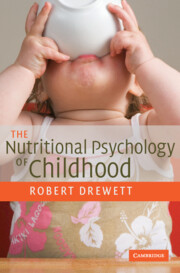Book contents
- Frontmatter
- Contents
- List of illustrations and table
- Preface
- 1 Introduction
- 2 The development of feeding behaviour: infancy
- 3 The development of feeding behaviour: weaning onwards
- 4 Born too small or born too soon
- 5 Nutritional deficiencies
- 6 Nutritional aspects of some physical conditions
- 7 Failure to thrive
- 8 Adiposity and obesity
- 9 Adolescence and the eating disorders
- 10 Some concluding thoughts
- References
- Index
4 - Born too small or born too soon
Published online by Cambridge University Press: 22 September 2009
- Frontmatter
- Contents
- List of illustrations and table
- Preface
- 1 Introduction
- 2 The development of feeding behaviour: infancy
- 3 The development of feeding behaviour: weaning onwards
- 4 Born too small or born too soon
- 5 Nutritional deficiencies
- 6 Nutritional aspects of some physical conditions
- 7 Failure to thrive
- 8 Adiposity and obesity
- 9 Adolescence and the eating disorders
- 10 Some concluding thoughts
- References
- Index
Summary
Growth before birth
Nutritional deficiencies in childhood tend to be most prevalent in the first three years. This is partly because young children have relatively high nutritional needs. They are growing rapidly in the years immediately after birth, and their small body mass gives them a relatively higher requirement for energy, as they lose heat more readily. In addition, as noted at the end of Chapter 3, in many countries there is a high prevalence of infectious disease in the early years, with diarrhoeal disease, particularly, leading both to anorexia and reduced food intake, and to poorer absorption of the food that is eaten. And the weaning of infants in the first year calls upon them to learn a whole new range of feeding skills which are initially not well developed.
Up to the time of birth, of course, an infant's nutrition is derived entirely from the mother, via the placental circulation. But this does not mean that all children receive the optimal nutrition before birth, or that malnutrition cannot occur before birth. It can and does. In considering the effects of malnutrition on psychological development, therefore, we need to begin at the earliest stages of development and consider first effects that might result from malnutrition occurring in the first nine months from conception, when the child is usually still in utero.
- Type
- Chapter
- Information
- The Nutritional Psychology of Childhood , pp. 69 - 87Publisher: Cambridge University PressPrint publication year: 2007



